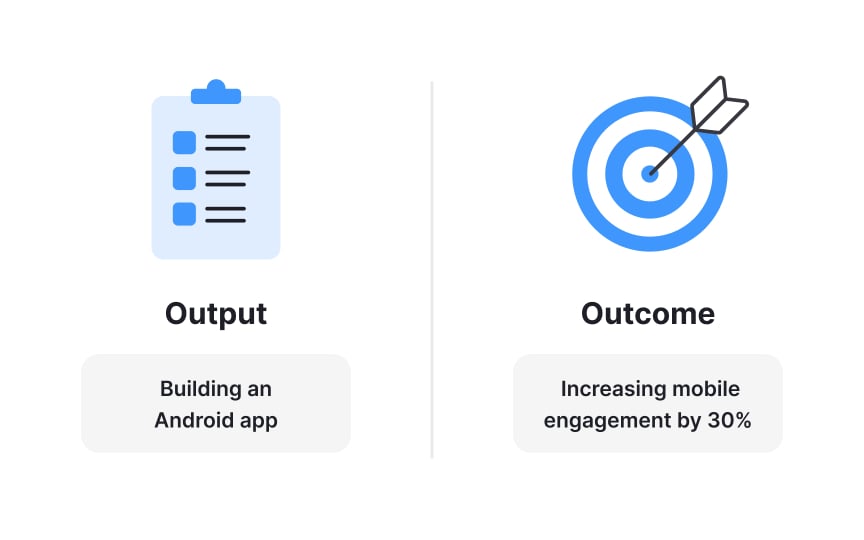Understanding outputs versus outcomes
The distinction between outputs and outcomes fundamentally changes how teams work. Outputs are tangible things teams produce: features, designs, code, and releases. Outcomes represent changes in user behavior or business metrics resulting from those outputs.
Teams often confuse the two and end up chasing the wrong outcomes. For example, a team might expand into a new market but fail to measure whether the move actually increases revenue or customer adoption. In this case, the market launch is just an output, not an outcome, because its real impact on the business remains untested.
Building an Android app is an output. Increasing mobile engagement by 30% is an outcome. The app only matters if it drives the engagement change. Yet many teams celebrate shipping the app without measuring whether it achieved its purpose.
This confusion leads to wasted effort. Teams spend months perfecting features that users ignore. They build exactly what stakeholders requested but fail to solve underlying problems. Without focusing on outcomes, teams work hard while creating minimal value. Every feature must connect to the desired behavior change.[1]


